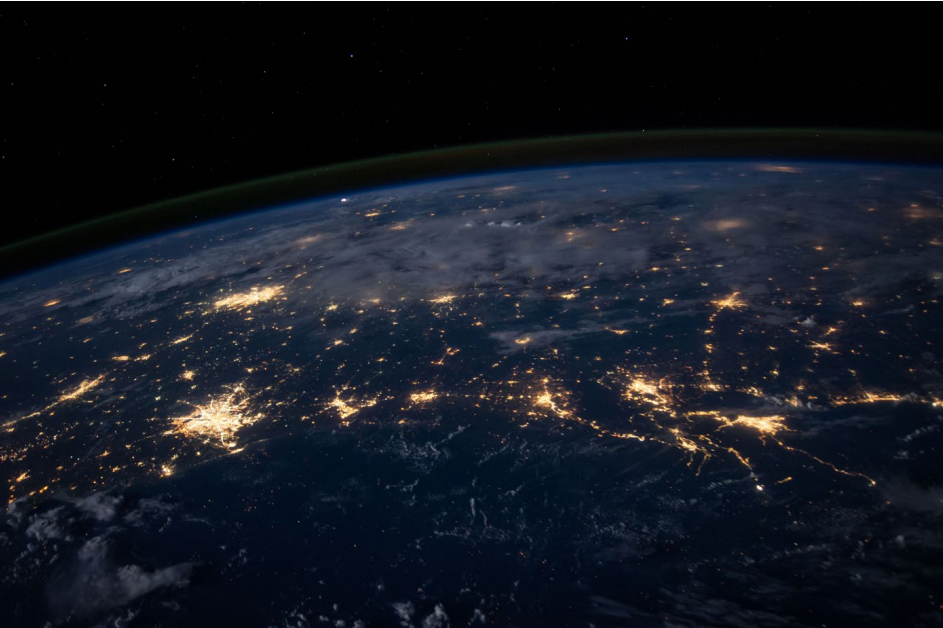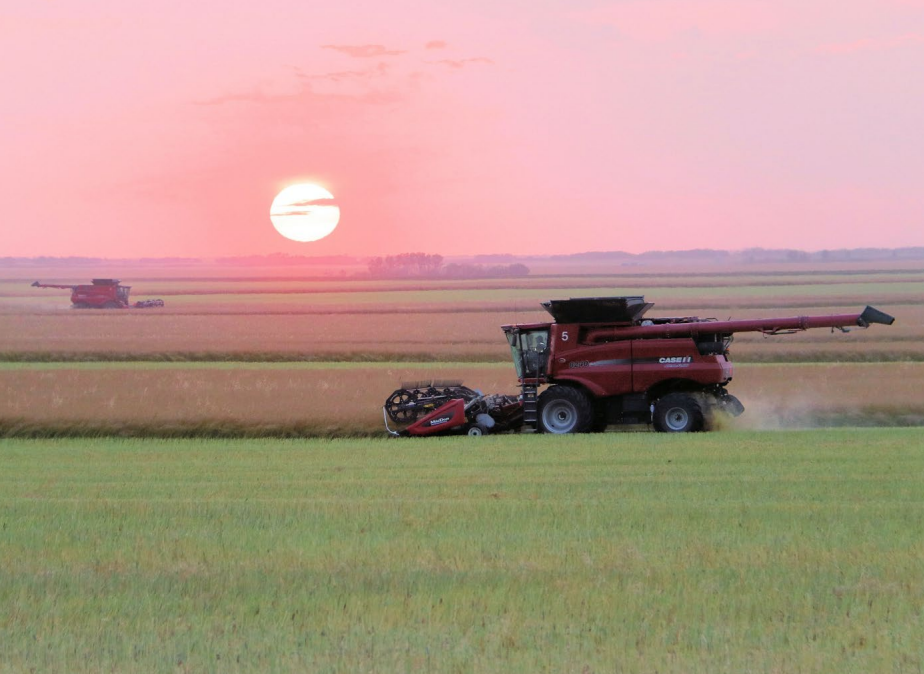SIDO Lyon 2024
18-19 SeptemberLyon, France
Expo
A Tele2 IoT White Paper
There’s an old saying that goes like this: Sometimes the things that hurt you the most teach you the greatest lessons. But while the expression is often used to comfort someone with a broken heart, it is eminently applicable when we look at technology and our environment.
That technology and progress have caused sometimes devastating destruction to the environment goes without saying. That technology – when equipped with IoT – can be instrumental in stemming the tide of destruction is obvious.
Having the ability to keep your company’s bottom line healthy while also helping to save the planet is a sure sign that the pleasures of modern life can co-exist with the environment. And IoT solutions are going to be instrumental in making this a reality.
When we talk about IoT we often talk about the competitive advantage it gives in areas like predictive maintenance, manufacturing, and smart cities. But when it comes to sustainability, the potential to tackle the many environmental challenges faced by the world today using IoT solutions is enormous.

Everything from agriculture technology (agritech) and smart homes to manufacturing and shipping can benefit from the insights gained by using IoT, helping us conserve energy, water, and other valuable resources.
While technology has been an important driver when it comes to global prosperity it has also brought unpleasant side effects. Increased and sometimes excessive power consumption, more waste generation, over-farming of land, excess deforestation – these are just some of the impacts we’ve experienced due to technological advancement.
The good news is that technology is also leading the charge when it comes to addressing the myriad environmental challenges of today – and IoT is an integrated part of this new technological revolution. Even better is that IoT is scalable so as your sustainability model expands so too can your IoT solution.
Gathering data via air, water, and other environmental monitoring systems yields powerful information, with collaborative analysis from the World Economic Forum and research firm IoT Analytics showing that of more than 84% could address Sustainability Development Goals (SDG).
When it comes to business it is patently obvious that if we run out of resources or otherwise harm our habitat, the bottom line is going to suffer.
By not addressing sustainability challenges, businesses will increasingly face growing difficulties, including supply chain irregularity, shifting markets, heightened regulatory compliances, a scarcity of raw materials, and increased costs.
Given the data and research, it comes as no surprise that most companies are eager to reduce their environmental footprint – and IoT is a crucial element in many company’s sustainability models, no matter what the industry. 97% of the world’s scientists say the planet is on the brink of death and human activity is at the heart of the problem. So, what can we change and how can we use IoT to not just stem the tide, but to turn it back?
Using the Planetary Boundaries concept as our framework, we will look more closely at the four areas. In each of these areas – water, agritech, energy, and biodiversity – environmental stressors impact both globally and locally. But because they don’t operate in isolation, the impact of sustainable practices in these areas have knock-on effects into myriad others. By using IoT, enterprises, governments, and other stakeholders can become powerful contributors to the development of long-term and sustainable business models that address our most pressing environmental concerns, while also keeping a healthy bottom line.
Three Ways IoT Supports Sustainability:

Water is the earth’s most precious resource – without it, life is unsustainable. Using it in an efficient way is vital to everyone’s future.
The bad news is that the “water crises” – defined as a significant decline in the available quality and quantity of fresh water, resulting in harmful effects on human health and/or economic activity – has been named by the World Economic Forum as being among the most impactful risks globally.
Rapid urbanization means roughly 70% of the world’s population will be living in cities by 2025, with about half of that number facing water scarcity problems. That translates into around two billion people suffering from water scarcity, as well as water becoming among the largest expenses a city will face, which will have a direct and devastating impact on economies.
783 million people – one in nine of the global population – do not have access to safe, clean drinking water.
Despite water systems being installed worldwide, 65% are said to break within the first two years due to non-sustainable methods of maintaining them. This is particularly true in more remote areas, as well as war-torn regions.
Efficiently using water resources to improve quality, and also implement better resource planning is critical, for both societal and economic reasons.
The good news is that technology – and IoT in particular – can be an instrumental part of solving the water crises. IoT helps control water resources by using efficient and optimized water solutions. When comprehensive smart water management systems are implemented, better irrigation facilities are the result, particularly in urban areas.
By combining various devices and sensors, a smart water management addresses a multitude of issues quickly and efficiently, often in real-time. And by provisioning real-time operations, officials can make use of real-time data to make smart decisions. The amount of big data available can also help in seeing the bigger picture, allowing for longer-term planning. Here’s how:
IoT and the data it makes available is an efficient and optimized solution for managing water resources (as well as for creating other smart city initiatives). Once a smart water management and monitoring system is in place, we can conserve our most valuable resource while also meeting the demands of the global population, saving lives, saving money, and boosting our environment.
The global population reaching more than 9 billion people by 2050 means agriculture production needs to increase by 50% – at the minimum.
Currently, more than 800 million people are undernourished, and one in three do not have enough to eat. Additionally, climate change and intensive farming have depleted land and water resources and threatened food production. There is also a decline in agriculture workers globally. All of these factors point to one thing: help is vital to the need to enhance agriculture – and IoT will be critical to doing this.

For farmers, IoT solutions have opened up very efficient ways to cultivate soil and raise livestock. Inexpensive and increasingly small wireless sensors provide new opportunities to boost crop yields. These smart devices can monitor soil conditions, quality and moisture levels at development stations, warehouse logistics, and livestock tracking. In other words, smart farming is well on its way to providing end-to-end data visibility in soil and crop health, machinery performance, storage conditions, and animal behavior. This visibility will, among other things, improve crop yield while helping farmers to conserve resources such as water, soil, and energy by improving irrigation systems, and keep costs under better control.
Here’s how smart farming – agritech or precision agriculture – and the data generated allow farmers to reduce waste and enhance production by precisely improving the application of resources to achieve high crop yields while reducing overhead.
IoT is, without a doubt, reshaping the future of agriculture. Farmers are using connected drones, sensors, and other technologies to increase yields and improve efficiency, thereby addressing one of the most critical problems facing the world today.
Case study: Taking Grazing Technology to the Next Level
Abundant cheap energy is the foundation of our civilization and an absolute necessity in meeting the UN Sustainable Development goals. Our current energy structure is built on fossil fuel, the use of which is causing large-scale devastation to the biosphere in a number of different ways, including global warming and the climate crisis.
The very good news is that even today the technologies and, more importantly, the products and solutions to produce fossil-free energy are available and seeing widescale implementation in all parts of the world. As we have previously noted, the typical cost for fossil-free electric energy generated by wind and sun is now lower than for fossil-based energy – and these costs are falling dramatically every year.
In combination with strong political commitments to transition to a 100% climate neutral society this means that we will actually move to a society even more driven by electricity. We will see this happen in transportation, and large traditional industries like steel and cement production will also move in this direction, mainly because it makes eminent business sense.
Today, 18 out of 28 EU countries have adopted 2050 as the target date for being Climate Neutral, including all major economies: Germany, France, the Netherlands, Spain, Italy and the United Kingdom. And a number of member states, regions, and cities are being even more aggressive: Finland 2035, Sweden 2045, Stockholm 2040, Norway 2030.
So, if the clean energy solutions are ready and actually cheaper, what is holding us back?
There are several things, including politics (concern about people losing fossil-based jobs) and the large investment involved in the transition.
If we look at the technical side one of the main challenges is to make electricity available in different places and at different times than where/when it is produced. Take the Swedish example, where electricity is already virtually fossil-free (which is not true for most countries), but where we need to move very large effects from production sites in the north to industry, transport, and households in the south. Already today growth in the major Swedish regions and establishment of new industry is hampered by lack of sufficient effect locally.
Building new transmission capacity is costly and typically takes many years to get approved and to then implement. It is necessary to move forward in this way, but it must also be complemented by much more local energy production in combination with storage (batteries), smarter usage, and energy savings. This means many more actors involved and re-modelling of the old monolithic utility model to a much more business-driven and dynamic multi-party environment.
We thus need to make real-time information available to all stakeholders, combined with automation and smart decision making (eg. AI). There is no way to achieve this without full digitalization of the electric grid, including the end-points, resulting in a super-smart grid.
IoT in all its forms is an essential and integral part of the smart grid dynamic, from simple sensors deployed by the millions over mid-range actuators and machines to advanced low-latency/-ultra-high bandwidth control systems, supported by 5G.
Once again, most of the technology is already here or at least coming online with 5G during the coming few years. The barriers are more related to the technology silos that are currently in place in the utility industry, which block interoperability and scaling. We should also be aware that while cellular plays a unique and increasingly important role, it will in many cases be complemented by a variety of local area connectivity solutions such as zigbee, wireless mesh, WiFi, and a number of industry protocols (w-mbus).
Here are some examples:
In the near future we look forward to seeing dedicated localized high-density 5G networks with super-low latency, extreme bandwidth, and guaranteed SLA (Service Level Agreement) replacing a big part of the wired infrastructure in large power-plants, as well as in other industry plants. Installation of fiber can be limited to handle base-station backhaul, as well as a limited number of truly critical, high-bandwidth use-cases.
Case study: Democratizing Sustainable Energy
Biodiversity is the diversity of life on Earth. The World Wildlife Foundation (WWF) defines it as the resource upon which families, communities, nations, and future generations depend. It is the link between all organisms on earth, binding each into an interdependent ecosystem, in which all species play a role.

The enormous variety of species on Earth – plants, animals, humans, microscopic organisms – are vital to balanced and healthy ecosystems, but factors that cause or influence negative change to ecosystem processes are growing.
Direct factors include habitat conversion and urbanization, climate change, invasive species, over exploitation of natural resources, and environmental degradation (pollution). Indirect factors, including changes in human populations, incomes, or lifestyle, act as drivers of direct factors. The biodiversity crisis means that not only is our planet suffering, our health and our livelihoods are at risk.
If we look at it in another way, we are currently using about 25% more natural resources than the planet is able to sustain, which is resulting in pressure or direct threats to species, habitats, and local communities. According to IUCN, the World Conservation Union, the monetary value of goods and services provided by ecosystems is estimated at roughly $33 trillion annually.
More than 3 billion people depend on marine and coastal biodiversity, while more than 1.6 billion people rely on forests for their livelihoods. Additionally, without healthy ecosystems the estimated 50–70,000 plant species harvested globally for traditional and modern medicine will be threatened, as will food security. About 100 million metric tonnes of aquatic life are harvested each year, while meat from wild animals is a critical contribution to food sources and livelihoods, particularly in countries with high levels of poverty and food insecurity.
When it comes to IoT and biodiversity, IoT solutions can have both a direct and indirect impact. Agritech and smart homes can give us critical insights into how to conserve energy, water, and other resources, while IoT can enable increased efficiency in areas like manufacturing by optimizing energy use. Data, the super power of IoT, can provide information on our environment via water and air monitoring systems. Growing numbers of synergies being created between different industries can lead to simultaneous reductions of their respective environmental footprints due to energy savings and smart solutions. And in doing so, they can develop a healthier bottom line.
If a company or industry wants to grow and stay competitive, particularly in the global arena, IoT adoption is critical. That there is a positive knock-on effect on the environment makes IoT an even more powerful weapon for industries. Here are just a few of the ways IoT solutions are helping in the battle to address biodiversity threats and environmental stressors – and where their value lies.
IoT provides the infrastructure needed to support citizen science, a valuable resource in the fight against climate change, which is beneficial for cities, NGOs, and businesses who take their bottom line seriously.
There are myriad other IoT applications and solutions that can and will have a positive impact on the fight to retain biodiversity. Both the corporate and the startup worlds are working tirelessly to find solutions that are beneficial to both the environment and a company’s bottom line. As IoT evolves so too will the solutions available. The real bottom line is that if we don’t work in harmony to address the very serious climate issues facing the planet today we’ll have bigger worries than making our stockholders happy.
Case study: Birds of a Feather Flock Together
Case study: Creating a Buzz Together
More from less is at the core of sustainable business models. Improved efficiency cuts waste and reduces energy use, while also streamlining processes and making better use of manpower, no matter the size or scale of your business. Harvesting and analyzing the data generated by your IoT solution reveals insights that can then be turned into meaningful action, and this ability to interpret and then act on data is why IoT is at the core of global sustainability as well as a sustainable business model that secures your business’s future while having a healthy impact on your bottom line today.
If you would like to learn more, please get in touch.